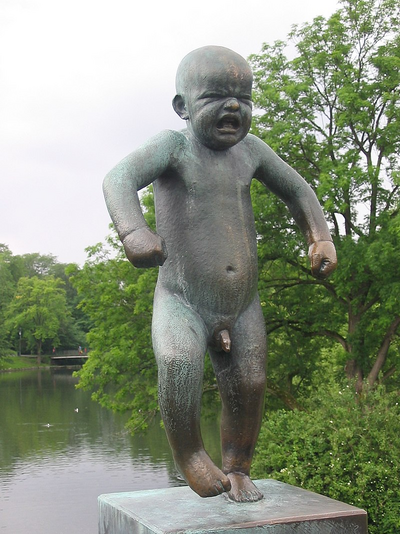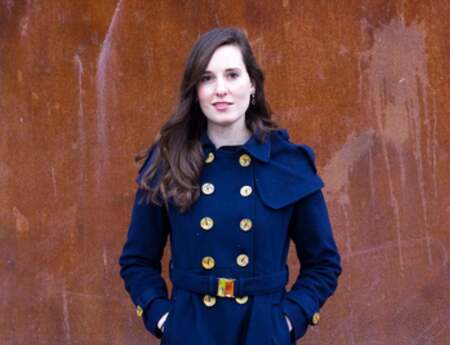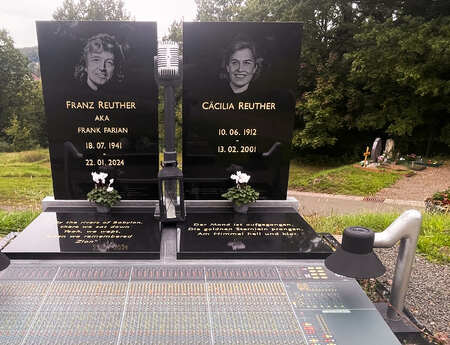Sculpting Emotions
Can a sculpture move us to tears? Can it be awe-inspiring or even make us laugh out loud? The short answer to all these questions is without a doubt yes. It might be the most powerful quality art possesses, to move people on such a level that it surpasses rational thought and reason and reaches down to our core emotions.
From an art historical perspective, we might even claim that evoking emotions with art is an essential part of a European Christian tradition. So for this introductory piece, instead of giving an overview of contemporary sculptures that evoke emotion, I am going to give some examples that go back to the roots of how emotion has been portrayed in Western art.
An Icon of Suffering
The most iconic image in the tradition of Western art is, of course, Christ on the Cross. The Gero Crucifix that dates back to 976 and is displayed in Cologne Cathedral in Germany is one of the earliest examples of an image of Christ north of the Alps in which we see Christ’s head hanging down and his body slumped. This monumental wooden sculpture showcases Christ’s suffering and was meant to evoke emotion with the visitors of the church, whether it be sadness, anger, or fear. Rather than only hearing about the Passion of Christ, this sculpture made the suffering visible and tangible, enlivening the believers their religious experience. Of course this image has been copied over and over again in Western culture. Even though our world has become more secular in the past centuries, images of suffering that evoke emotion have become an integral part of our culture. You only need to grab a newspaper, turn on the television, or scroll online to be confronted with them.
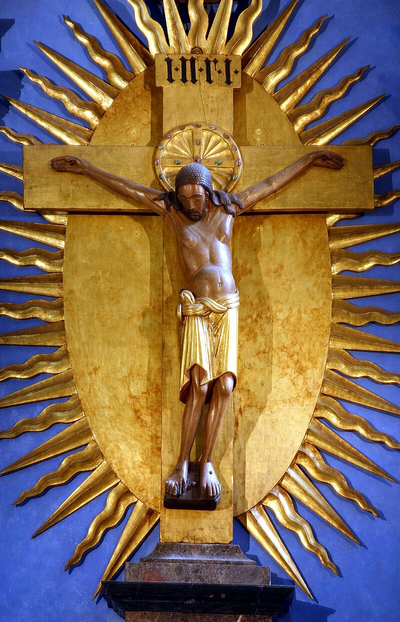
Maternal Mourning
Another iconic image that stems from the visual Christian tradition is the Pietà. The origins of the mother Mary holding the mortal body of Christ in her lap developed in Germany in the early 1300s; for example, the wooden Roettgen Pietà. These sculptures were developed for private devotion in which the personal relationship with God was centralized. Such sculptures are referred to in German as Andachtsbild (contemplation image). In the Roettgen Pietà, Christ’s wounds are exaggerated, and Mary’s face is a grimace representing the pain of losing her son.
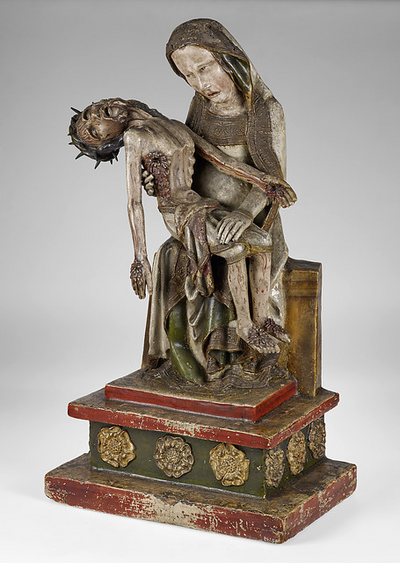
The most famous example of a Pietà (1498-99) is, of course, the grand marble sculpture of Michelangelo in Saint Peter’s Basilica in the Vatican, and it shows a far more serene image. Here we see a beautiful young Mary, mourning her grown son, whose body lays lifeless on her lap like a child being cradled. Here the viewer isn’t asked to relate to the suffering of Christ, but to be in awe of the mourning mother.
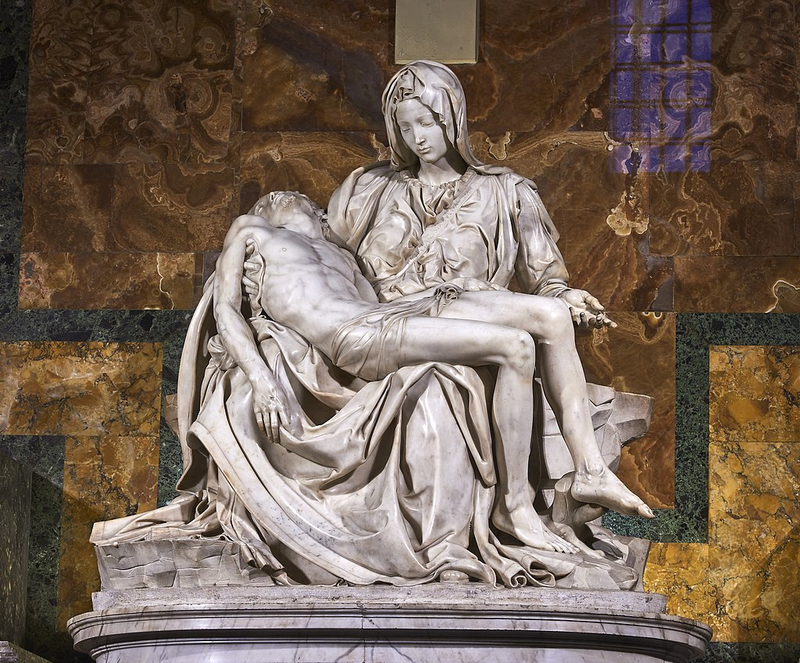
In the twentieth century, Käthe Kollwitz used this motif to make her own Pietà (1937-1939) on the anniversary of her son Peter’s death, who was killed in the First World War. This small bronze sculpture shows us an elderly woman holding the dead body of her child between her knees and hugging it against her body. Here Kollwitz transforms a centuries-old religious image into her personal contemporary grief that she has carried with her for decades and makes it palpable for the spectator.
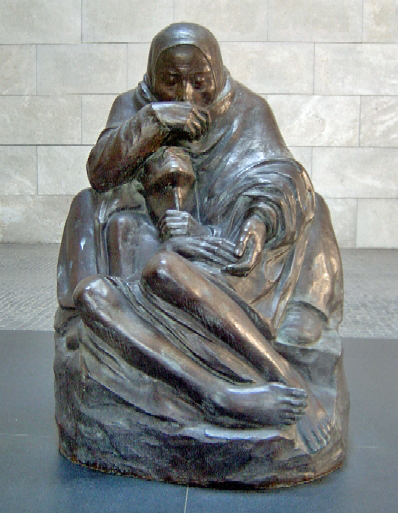
Remembering the Dead
There is another sculpture representing mourning from the Middle Ages. The pleurants, or weepers, are small sculpture groups of anonymous noble men and women that were placed around the tombs of royalty. These sculptures became trendy in late mediaeval times in Western Europe and are interesting as they show secular sculptures showing emotions. For example, the 24 pleurants made for the tomb of Isabella of Bourbon all have a distinctive look and posture, so you can identify them as clergy and nobility. They were commissioned by the daughter Maria of Burgundy for her mother, and the pleurants represent 3 generations of ancestors. Mourning is individualized and brought into the private realm, but it also ensured that the important person would always have a crowd of mourners around their grave. A concept we can still find in contemporary monuments when we visit graveyards. These sculptures indicate and individualize the grave and keep watch over the dead.
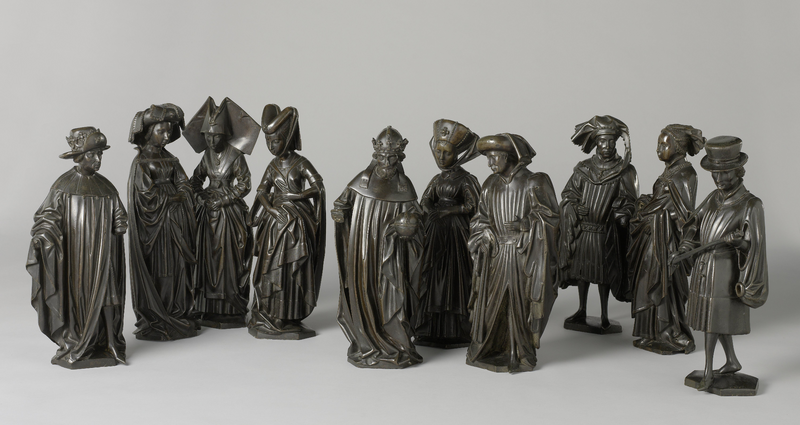
However, when we look at contemporary sites for communal mourning, for example, the recent Holocaust Name Monument (2021) in Amsterdam by Daniel Libeskind, collective remembrance is not done by showing emotions but by visualizing the vast number of people who perished. These monuments are often very minimalistic in their design, leaving it to the individual to decide what they experience and how that should make them feel.
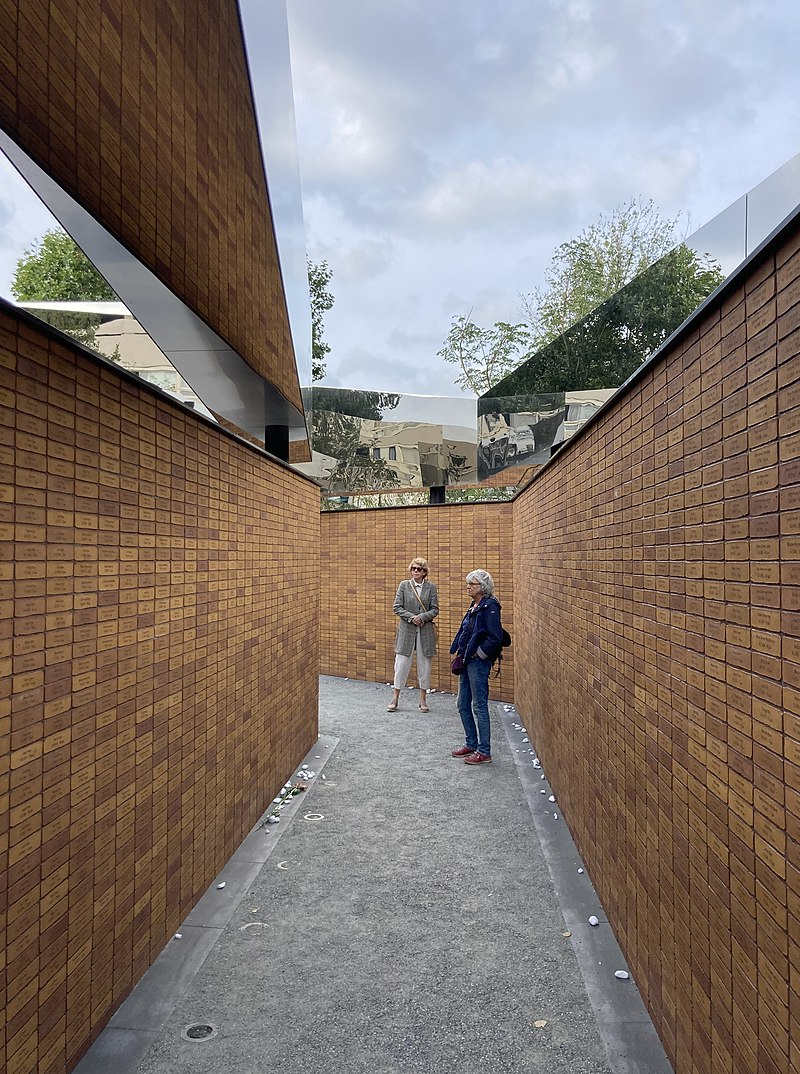
Turning emotions upside down
To end on a positive note, there are also many sculptures that evoke positive feelings. In the upcoming year we will dive deeper into all the possible ways sculptures evoke emotion. Some sculptures may even show one emotion and provoke another. A funny example of this can be found in the Vigelandpark in Oslo, Norway. This park shows 212 stone and bronze sculptures made by Gustav Vigeland between 1907 and 1942. It shows humanity naked, from little babies until old age, in a whole range of compositions and human emotions. The most famous sculpture, however, is a very small bronze statue of a boy of maybe 1.5 years. This little fellow is angry. We see him screaming at the top of his lungs, his eyes squinted. We can imagine the tears pouring down his cheeks. He is even stamping his little foot. Still we cannot help but smile at him and even laugh a little. This anger is so recognizable in children when they do not yet have the tools to verbally express themselves. Vigeland has beautifully caught that raw emotion.
